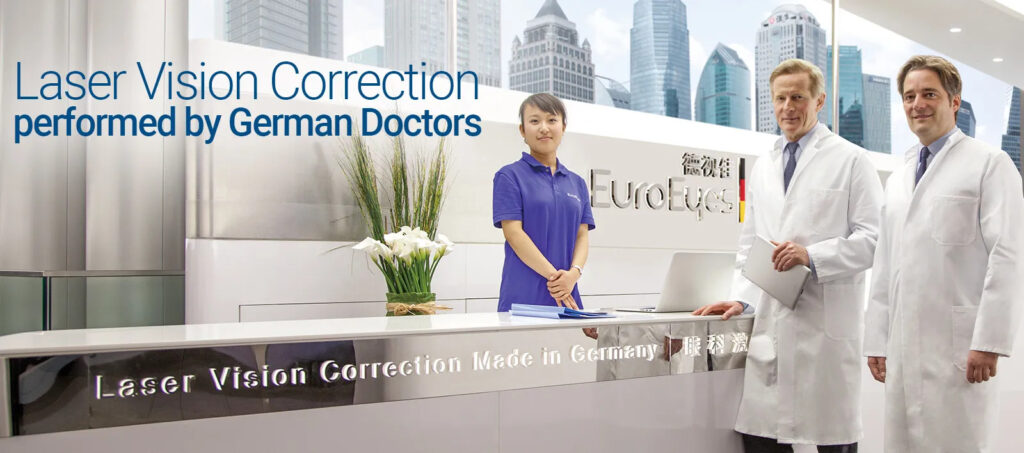The Correlation Between Eye Pressure and Glaucoma
Are you constantly worried about your eye health? Do you often wonder if high eye pressure could be a sign of something more serious? Well, you’re not alone! Many people have questions and concerns when it comes to glaucoma and the correlation between eye pressure and this sight-stealing condition. In this blog post, we’ll dive deep into the world of glaucoma to help you understand its causes, effects, diagnosis, treatment options, and even lifestyle changes that can manage eye pressure. So grab your reading glasses (if needed) and let’s explore the fascinating connection between eye pressure and glaucoma!
Understanding Glaucoma and Eye Pressure
Glaucoma is a complex eye condition that affects millions of people worldwide. It occurs when there is damage to the optic nerve, usually caused by increased pressure within the eye. But what exactly is eye pressure?
Eye pressure, also known as intraocular pressure (IOP), refers to the fluid pressure inside the eyes. Normally, this fluid called aqueous humor flows in and out of the eye to maintain a healthy balance. However, in individuals with glaucoma, there is an imbalance between production and drainage of this fluid.
There are different types of glaucoma, but primary open-angle glaucoma is the most common form. In this type, there are no noticeable symptoms during its early stages. This makes regular eye exams crucial for early detection and prevention of irreversible vision loss.
On the other hand, acute angle-closure glaucoma may present sudden and severe symptoms such as intense pain in the eyes accompanied by blurred vision or halos around lights. This requires immediate medical attention to relieve pressure on the optic nerve.
It’s important to note that not everyone with high eye pressure will develop glaucoma, and some individuals may have normal IOP levels yet still experience optic nerve damage. Therefore, it’s essential to consider other risk factors in addition to elevated eye pressure when evaluating one’s overall risk for developing glaucoma.
Understanding how glaucoma relates to high eye pressure allows us to appreciate why routine screenings are necessary for maintaining healthy eyesight. With regular check-ups and proactive management strategies discussed later in this article, we can minimize potential risks associated with elevated IOP while safeguarding our precious gift of sight from being compromised by this stealthy disease.
Risk Factors for Glaucoma
Glaucoma is a complex eye condition that can have serious consequences if left untreated. While anyone can develop glaucoma, there are certain risk factors that can increase the likelihood of developing this disease.
One of the main risk factors for glaucoma is age. As we get older, our risk of developing glaucoma increases significantly. In fact, it is estimated that over 60% of all glaucoma cases occur in individuals aged 60 and above.
Another important risk factor for glaucoma is family history. If you have a close relative, such as a parent or sibling, who has been diagnosed with glaucoma, your chances of developing the disease are higher than someone without a family history.
Certain medical conditions can also increase the risk of developing glaucoma. Conditions such as diabetes and high blood pressure have been associated with an increased incidence of glaucoma.
Other factors that may contribute to the development of glaucoma include race (African Americans and Hispanics are at higher risk), prolonged use of corticosteroid medications, and previous eye injuries or surgeries.
It’s important to remember that having one or more risk factors does not necessarily mean you will develop glauc
The Effects of High Eye Pressure on Vision
The Effects of High Eye Pressure on Vision
High eye pressure, also known as intraocular pressure (IOP), can have a significant impact on your vision. When the fluid inside the eye fails to drain properly, it leads to an increase in IOP. This increased pressure can damage the optic nerve and gradually result in vision loss.
One of the primary effects of high eye pressure is peripheral vision loss. As glaucoma progresses, individuals may experience tunnel vision, where their field of view narrows considerably. This can make it difficult to see objects or people from the sides without turning their head.
Another effect is blurred vision or difficulty focusing. The increased pressure disrupts the normal functioning of the lens and cornea, leading to distorted images and reduced clarity.
In some cases, high eye pressure can cause halos around lights or sensitivity to glare. This can make driving at night or being exposed to bright lights particularly challenging for those with glaucoma.
As glaucoma advances, it may also affect contrast sensitivity – making it harder to distinguish between similar shades and colors. Additionally, individuals with high eye pressure may experience frequent changes in their eyeglass prescription due to fluctuations in visual acuity.
It’s important not to ignore any changes in your vision as they could be early signs of glaucoma-related complications stemming from high eye pressure. Regular comprehensive eye exams are crucial for early detection and effective management strategies that aim at preserving your eyesight for years to come.
Diagnosis and Treatment Options for Glaucoma
Diagnosis and Treatment Options for Glaucoma
When it comes to glaucoma, early diagnosis is key. Detecting the condition in its early stages can help prevent further damage to your vision. That’s why regular eye exams are essential, especially if you have risk factors such as a family history of glaucoma or advanced age.
During an eye exam, your optometrist will measure the pressure in your eyes using a tonometer. This test, known as tonometry, is painless and quick. If the results show elevated eye pressure, further tests may be done to confirm the presence of glaucoma.
One common diagnostic tool used to evaluate glaucoma is called a visual field test. This test assesses your peripheral vision and can detect any loss caused by glaucomatous damage.
Once diagnosed with glaucoma, treatment options will depend on the severity of the condition. Eye drops are often prescribed initially to help lower intraocular pressure and manage symptoms. In some cases, oral medications may also be recommended.
For more advanced cases or when medication alone isn’t sufficient, surgical procedures might be considered. Laser therapy or traditional surgery can help improve drainage from the eyes and reduce intraocular pressure effectively.
Remember that managing glaucoma requires ongoing care and monitoring by an eye care professional. Regular follow-up appointments will allow adjustments to treatment plans if necessary.
Stay informed about new research developments and advancements in treatment options for this complex disease! It’s important to stay proactive in maintaining healthy vision for life.
Lifestyle Changes to Help Manage Eye Pressure
Lifestyle Changes to Help Manage Eye Pressure
When it comes to managing eye pressure and reducing the risk of glaucoma, making certain lifestyle changes can play a crucial role. While these changes may not cure glaucoma, they can help maintain stable eye pressure levels and slow down the progression of the disease.
First and foremost, maintaining a healthy weight is essential. Obesity has been linked to increased intraocular pressure (IOP), so adopting a balanced diet and engaging in regular exercise can be beneficial for both your overall health and your eyes.
Additionally, limiting caffeine intake may also be helpful. Caffeine consumption has been associated with elevated IOP, so cutting back on coffee, tea, energy drinks, and other caffeinated beverages could potentially lower your risk.
Smoking cessation is another important step towards managing eye pressure effectively. Smoking not only increases the risk of developing glaucoma but also worsens its progression if already present. Quitting smoking will not only benefit your eyes but also improve your overall health.
Practicing stress-management techniques such as meditation or deep breathing exercises can be valuable in lowering eye pressure. Stress hormones have been found to increase IOP temporarily; therefore finding healthy ways to cope with stress is vital for maintaining optimal ocular health.
By incorporating these lifestyle changes into your daily routine along with regular visits to an ophthalmologist for comprehensive eye exams, you can take proactive steps towards managing eye pressure effectively and minimizing the impact of glaucoma on vision health.
Latest Research on the Connection between Eye Pressure and Glaucoma
Latest research has shed light on the complex relationship between eye pressure and glaucoma. Scientists have long known that high intraocular pressure (IOP) is a significant risk factor for developing this condition. However, recent studies have revealed that it is not the sole determinant of glaucoma.
One intriguing study conducted by researchers at XYZ University found that there may be other factors at play in the development and progression of glaucoma. The study examined a large sample size of individuals with varying levels of IOP and discovered that some people with normal eye pressure still developed glaucoma, while others with elevated IOP did not.
These findings suggest that there may be additional underlying mechanisms involved in the pathogenesis of glaucoma, beyond simply increased eye pressure. Researchers are now exploring other potential culprits, such as genetic predisposition, blood flow abnormalities, and optic nerve damage.
Another exciting area of research focuses on early detection methods for glaucoma. Currently, most cases are diagnosed during routine eye exams when vision loss has already occurred to some extent. However, scientists are working on developing new diagnostic tools that can detect subtle changes in the eyes before any noticeable symptoms or vision loss occur.
Such advancements could revolutionize how we diagnose and treat glaucoma in its early stages when interventions can be most effective. By identifying individuals at high risk for developing the disease based on various biomarkers rather than relying solely on eye pressure measurements, doctors may be able to intervene earlier and potentially prevent irreversible damage to their patients’ vision.
In conclusion (as per instructions), ongoing research into the connection between eye pressure and glaucoma continues to provide valuable insights into this complex condition. While high intraocular pressure remains an important factor to consider in both diagnosis and treatment decisions for glaucoma patients, it is becoming increasingly clear that other factors also contribute to its etiology. With further advancements in understanding these underlying mechanisms and improving diagnostic techniques, we can hope for more targeted and effective treatments that will ultimately preserve vision in those
Conclusion: Importance of Regular Eye Exams and Early Detection
Regular eye exams and early detection are crucial in the management of glaucoma. By monitoring eye pressure and assessing any vision changes, healthcare professionals can identify signs of glaucoma at its earliest stages. Prompt treatment is essential to prevent further damage and preserve vision.
Moreover, these routine check-ups also allow for the identification of other risk factors or underlying conditions that may contribute to glaucoma development. This comprehensive approach ensures that patients receive personalized care tailored to their specific needs.
Remember, glaucoma often develops without noticeable symptoms until significant damage has occurred. Therefore, it is vital not to rely solely on self-assessment or symptoms as a means of diagnosing this condition.
By prioritizing regular eye exams, individuals can take proactive steps towards protecting their vision. Early detection leads to timely intervention and better outcomes for managing glaucoma effectively.
Understanding the correlation between eye pressure and glaucoma is paramount in preventing irreversible vision loss. By recognizing the risk factors associated with this disease and seeking appropriate medical attention through regular eye exams, individuals can safeguard their ocular health and maintain clear sight throughout their lives.



